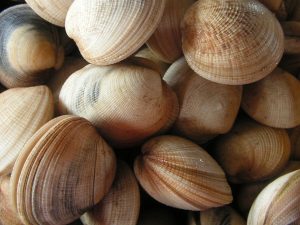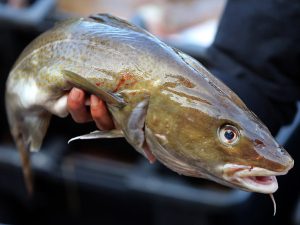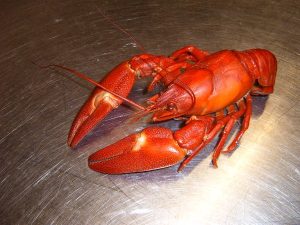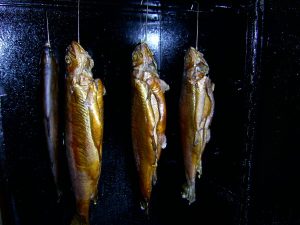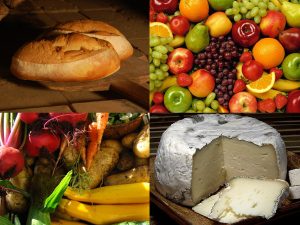Low-impact seafood - introduction
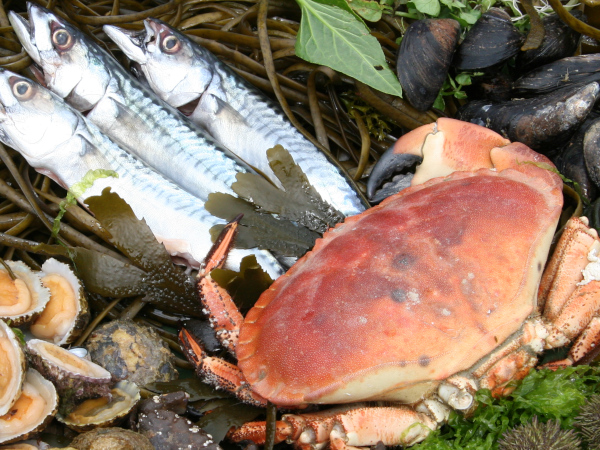
“By ensuring that we make informed decisions about what we consume and what we do with our waste, and how we treat our stunning coast and the waters that surrounds us, we can ensure that our ocean is looked after for future generations.” – Marine Conservation Society
Contents
What is low-impact seafood?
First, what we mean by seafood is fish, cephalopods (squid, octopus), decapods (crabs, lobsters, prawns), plus shellfish like oysters and mussels. In this intro we’re talking more about buying seafood, but we cover fishing and coastal foraging elsewhere. Currently, around half the seafood the world eats is caught, and about half is from aquaculture (farming).

Seafood can be one of the most sustainable types of food, but it’s complicated, and it depends on how it’s harvested. Take mussels, for example – they can be harvested from the wild or farmed, and if farmed, they don’t need to be fed. They’ll filter what they need from the surrounding seawater. The farms form reefs that draw in other marine wildlife, and as a finale, they sequester carbon in their shells. Some vegans even make an exception for shellfish. At the other end of the spectrum there’s intensive farming that involves a lot of feed, chemicals and destruction of habitat.
When it comes to catching wild fish, sustainability is underpinned by how healthy the stock of a species is. For example, mackerel – stocks are healthy, it breeds and grows quickly and bounces back from shocks easily. It’s a pelagic fish (lives in mid-water), so can be scooped out of the sea with nets or lines, without trawling the bottom. By-catch is low – i.e. you don’t tend to accidentally catch other species. At the other end of the spectrum we have large beam trawlers or dredgers that scour the sea bed and damage marine habitat and ecosystems – crushing the shelters that young fish need.

Humans have been catching fish to eat since there were humans, and it’s only recently, with industrial-scale fishing, that it’s become a problem. It’s difficult to get a snapshot of how the seas used to be, compared to now, but old catch records and anecdotal evidence seem to indicate that stocks have been badly damaged, in some cases irreversibly. The collapse of Cod in the Grand Banks off Newfoundland in the North Atlantic due to overfishing is perhaps the most famous example. It was the first real wake-up call for fishery scientists.

97% of global fish stocks are either overfished or fished to their maximum capacity, and somehow we have to feed another few billion people who are due to turn up this century. But in some ways, things are getting better. Certainly, awareness of the problems has increased, and consumers are more concerned about what they eat, but the oceans are so huge, and their ecosystems so complex, that it’s difficult to get a true picture. There’s not much scope for catching more and more wild fish, which is why we’re seeing aquaculture grow (it’s currently growing at around 6% per year – the fastest growing sector in food), and over the last 30 years, aquaculture has become more sustainable because of organisations like the Marine Conservation Society and others working with the industry to reduce the amount of wild fish fed to stock, chemicals and drugs used etc.
What are the benefits of low-impact seafood?
We’ve seen that low-impact fishing and aquaculture can provide food without damaging marine ecosystems, but it can also benefit coastal communities – socially and economically. This depends a lot on scale. Small, family fishing boats provide autonomous jobs, preserve heritage and help build interesting, vibrant communities, from which profits aren’t extracted by giant businesses to pay shareholders elsewhere. The small boats also catch lots of different species that are non-quota, meaning no rules on how many can be caught, so there’s less waste. On the whole, they tend to use low-impact methods – hand lines and set nets with buoys and weights (rather than dragging trawl nets across the sea be), and pots to catch crabs and lobsters etc.

The inshore, small fishing fleet (called the ‘under-10-metre’ fleet) comprises 80% of the UK fleet and provides 50% of fishing-related jobs, but has been allocated less than 4% of the overall quota of fish caught. It’s another example of the state disadvantaging small businesses – something we’ll blog about more over time.
If we can manage the oceans sustainably, they can provide us with a renewable source of food in perpetuity, from thriving coastal communities.

What can I do?
The Marine Conservation Society’s Good Fish Guide is a great first port of call. It takes into consideration all aspects of fishing and farming, including health of fish stock, fishing methods, potential by-catch etc. It takes complicated scientific information and boils it down to an easy-to-use traffic light system. If you’re buying a particular fish in a fishmongers or a restaurant, it will tell you whether it’s a good choice in terms of sustainability.

You can also eat a range of different species. In the UK, 80% of the seafood we eat is from just 5 species – cod, haddock, salmon, tuna and prawns. This means that many species that are caught are difficult to sell, are often thrown back dead into the sea. Salmon and prawns are generally farmed, and around a third of all fish caught in the world are fed to farmed fish (although this isn’t necessarily a bad thing – most are Peruvian anchovies, which are enormously productive – but generally, we should be eating the fish we catch, not feeding them to bigger fish). Plus you could develop a taste for shellfish – among the most sustainable of all foods. You can eat sustainably and have culinary adventures at the same time.

Jack from the Marine Conservation Society gave us a ‘magic’ mnemonic for remembering their top tips:
- M: mix it up (try different species), rather than putting a lot of strain on just a few species; you’ll learn a lot and have more interesting meals.
- A: avoid the ‘red’ rated items – the most endangered or least sustainably obtained; e.g. the European eel – now as endangered as the Bengal tiger, yet it still finds its way onto menus.
- G: use the Good Fish Guide.
- I: impact – think about how your seafood is caught; the same fish can have a very different impact on the ocean depending on whether it was caught with a rod and line or by a beam trawler. Let’s not fund the trawlers.
- C: check for eco-labels – they can be a good indicator of whether what you’re looking at is sustainably sourced – for example, the Marine Stewardship Council‘s ‘blue tick’ or their sister organisation the Aquaculture Stewardship Council‘s labels for farmed seafood; they normally only apply to larger-scale fisheries, so if something doesn’t have an eco-label, it doesn’t necessarily mean it’s not sustainable – but if you’re buying things like cod, haddock or salmon, it’s worth checking (they’re more often provided by large-scale operations; you’re more likely to get crab, turbot, dover sole or bass from the smaller boats).

When it comes to fish and chip shops, they often source their fish from Norway or Iceland – sources that are usually reasonably sustainable. Many chip shops also have MSC Chain of Custody certification, showing that every link in the supply chain to the shop was sustainable. There’s an explanation in the video below. The most damaging thing you can get from a chip shop or restaurant is probably scampi – usually caught by bottom trawlers. They can be caught sustainably in lobster pots, in which case they’re called ‘langoustine’, and are more expensive.
The most sustainable way to obtain seafood is almost definitely to catch it yourself (see here and here); and if you’re concerned with the economic and social benefits to communities of small-scale fishing, you can support them by purchasing from distributors that we’ll highlight here. You could even try to join them – there’s training and sometimes grants available. You’re not going to get rich with a small fishing boat – it’s more about preferring an outdoor lifestyle close to the sea.
Specialist(s)
Thanks to Jack Clarke of the Marine Conservation Society for information.
The specialist(s) below will respond to queries on this topic. Please comment in the box at the bottom of the page.

Jack Clarke began his career conducting research and running conservation projects before working as a campaigner on food and fishing issues. He then spent 7 years developing Community Supported Fisheries at home and across Europe. He now works at the Marine Conservation Society, where he helps people and businesses choose and use seafood more sustainably.

